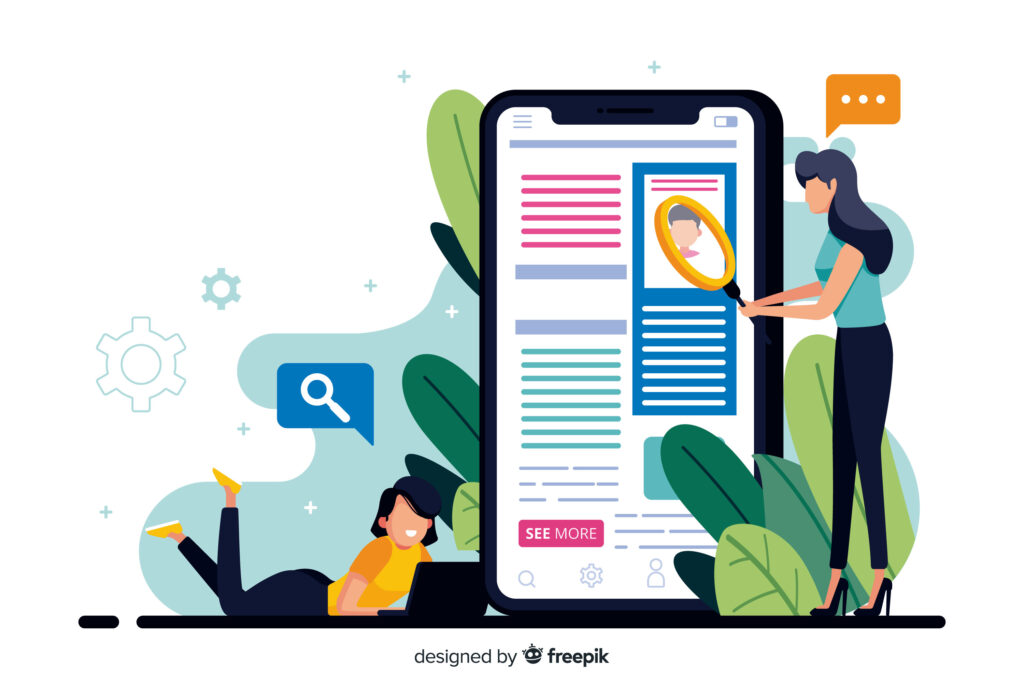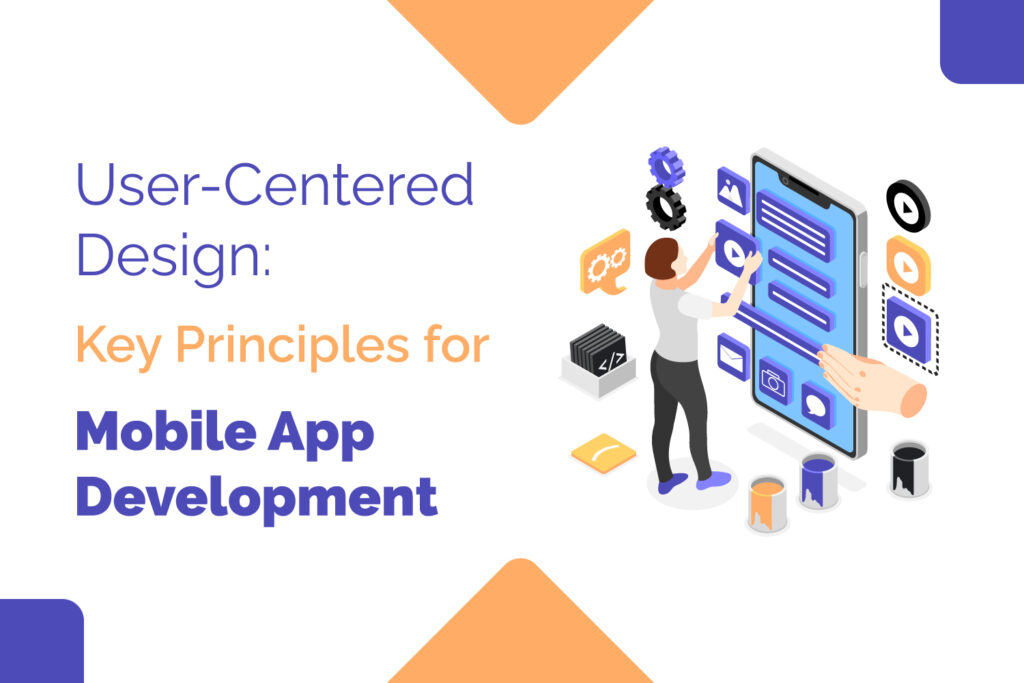Introduction of User-Centered Design
Welcome to the world of mobile app development, where innovation and creativity converge to shape the digital landscape. Picture this: you have an ingenious idea for a mobile app, one that promises to revolutionize the way people live, work, and play. You’re brimming with excitement, eager to bring your vision to life and make a meaningful impact on the world.
But hold on a moment. Before you dive headfirst into the intricacies of coding and design, there’s a crucial consideration that often gets overlooked: the user. Yes, that’s right – the individual on the other end of the screen, whose needs, desires, and frustrations ultimately determine the success or failure of your app.
Enter user-centered design – a philosophy that places users at the forefront of the development process, guiding every decision, every pixel, and every line of code. It’s not just about building a flashy interface or cramming in as many features as possible. It’s about crafting an experience that speaks directly to the hearts and minds of your users, anticipating their needs, and exceeding their expectations at every turn.
So as you embark on your journey into the wondrous realm of mobile app development, remember this: the user is not just a statistic, a data point, or a line in a spreadsheet. They are the beating heart of your app, the soul that breathes life into your creation. Treat them with care, respect, and empathy, and you’ll find that the rewards are far greater than you ever imagined.
Now, let’s delve deeper into the world of user-centered design and uncover the key principles that will guide you on your quest to create truly unforgettable experiences.
Understanding User-Centered Design

User-centered design (UCD) is a philosophy that prioritizes empathy and understanding in the development process. It begins with gaining insights into users’ needs, behaviors, and preferences through research and observation. By listening to users and tailoring solutions to fit their unique preferences, developers create personalized experiences that resonate deeply. UCD is iterative, allowing for continuous improvement based on user feedback and real-world usage data. It emphasizes accessibility and inclusivity, ensuring that apps are usable by individuals of all abilities. Ultimately, user-centered design is about building meaningful connections with users through empathy, iteration, and a commitment to excellence.
User-Centered Design Principles:
1. User Research:
User research serves as the bedrock of user-centered design in mobile app development. It involves gaining a deep understanding of your target audience’s needs, preferences, and pain points. Using methods such as interviews, surveys, and usability tests, developers can gather valuable insights that are useful at every stage of the design process.
Imagine you’re creating a productivity app aimed at professionals. Through user research, you might discover that your audience values simplicity, seamless integration with existing tools, and robust privacy features. Armed with this knowledge, you can tailor your app to meet these specific needs, ensuring maximum user satisfaction.
2. Iterative Design Process:
User-centered design is inherently iterative, emphasizing continuous refinement and improvement based on user feedback. Prototyping and wireframing enable developers to visualize their ideas and test them with real users early in the development cycle.
Consider a scenario where you’ve designed a new messaging feature for your app. By prototyping and soliciting feedback from users, you discover that the interface is confusing and the workflow inefficient. Through iterative testing and refinement, you refine the feature to address these issues, ultimately delivering a seamless and intuitive user experience.
3. Usability and Accessibility:
Usability and accessibility are non-negotiable aspects of user-centered design in mobile app development. Your app must be intuitive and easy to navigate, regardless of a user’s technical proficiency or physical abilities.
Imagine you’re designing a health and fitness app targeting users of all ages and abilities. By adhering to accessibility standards and guidelines, such as providing alternative text for images and ensuring proper contrast ratios, you ensure that everyone can access and benefit from your app’s features. Additionally, intuitive navigation and clear call-to-action buttons enhance usability, guiding users effortlessly through your app’s interface.
4. Visual Hierarchy and Consistency:
Visual design plays a pivotal role in shaping user perceptions and interactions within your app. User-centered design principles advocate for clear visual hierarchy and consistency, facilitating seamless navigation and reinforcing brand identity.
Consider a scenario where you’re designing a weather app. By prioritizing essential information such as current temperature and weather conditions, you ensure that users can access critical data at a glance. Consistent use of colors, typography, and iconography across different screens enhances familiarity and usability, creating a cohesive and visually appealing user experience.
5. Performance and Speed:
In an era of instant gratification, users expect apps to load quickly and respond promptly to their interactions. User-centered design principles prioritize performance and speed, minimizing loading times and optimizing resource usage.
Imagine you’re developing a ride-sharing app. By optimizing code, compressing images, and leveraging caching mechanisms, you ensure that your app loads swiftly and operates seamlessly, even in areas with limited network connectivity. By prioritizing performance, you create a frictionless user experience that keeps users engaged and satisfied.
6. Feedback and Engagement:
Effective communication is key to fostering user engagement and loyalty. User-centered design principles encourage the integration of feedback mechanisms and interactive elements within your app.
Consider a scenario where you’re designing a recipe app. By soliciting user feedback through ratings, reviews, and surveys, you gather valuable insights into user preferences and pain points. Additionally, interactive features such as recipe sharing and personalized recommendations enhance user engagement, fostering a sense of community and connection among users.
Incorporating these key principles of user-centered design into your mobile app development process can significantly enhance the user experience, driving user satisfaction, retention, and ultimately, the success of your app.
Conclusion: Prioritizing Users in Mobile App Development
In the world of mobile app development, user-centered design principles stand as pillars of innovation and success. By placing users at the forefront of the development process, we create experiences that resonate, inspire, and endure.
As you embark on your development journey, remember: users are the ultimate judges of your app’s success. Listen to their feedback, iterate relentlessly, and always prioritize their needs and experiences.
In the end, it’s not just about building apps; it’s about crafting meaningful connections and enriching lives. Let empathy, iteration, and user-centricity guide you to create experiences that truly make a difference.
Thank you for joining us on this journey through the principles of user-centered design. Here’s to apps that inspire, delight, and empower—today, tomorrow, and beyond.











